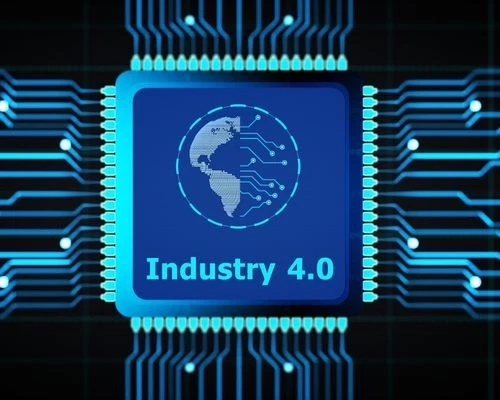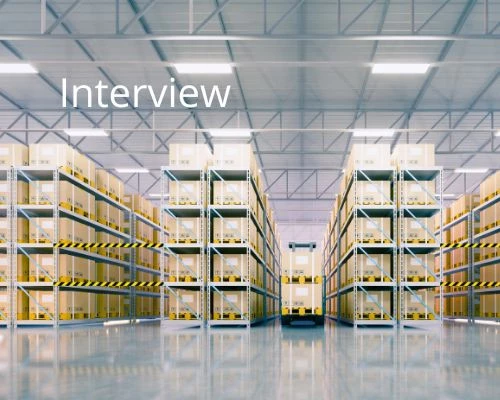Five Ways to Build Your Industry 4.0 Workforce
Add bookmark
It’s been a challenging few years for manufacturing workers. Not only have workers had to contend with a global pandemic – and the rapid changes to work processes that were needed to accommodate social distancing requirements – but ongoing supply chain disruptions and the pace of technological change continue to disrupt normal business operations.
Against this backdrop is an era that experts have dubbed Industry 4.0. It’s characterized by a complex interplay between machines, computing power and human workers.
The factory of the future will require workers to be connected to each other, to machines and to information in ways that were previously unimaginable. Interconnected sensors and computing technology combine in ways that can unleash unprecedented levels of insight, productivity, quality and operational agility.
These technologies - which include augmented reality, collaboration suites, predictive analytics, and others - are rapidly moving beyond “nice to haves” to become critical business enablers. Manufacturing workers are changing from skilled production workers to connected, digitally enabled workers.
However, the transition to a connected workforce is not without its challenges. Some workers will struggle with the transition to a more digital environment. All workers will require new skills and capabilities to deal with the rapidly changing technological landscape.
The manufacturers that will succeed in the future will focus on getting the basics in place, engaging and upskilling their workers, and deploying digital technologies and data that are ‘right-sized’ for their operations.
Here are five best practices to prepare your workforce for Industry 4.0, gathered from industry experts and leaders at IX Network’s recent Connected Manufacturing Worker online event.
#1: Focus on People, Process and Culture (not just technology)
It’s easy to get excited by the promise of the latest and greatest technology. There are so many powerful new capabilities that software offers. But it is important not to be beguiled by technology at the expense of establishing a strong business foundation built on people, process and culture. Ultimately, if the underlying processes don’t change and the people and the culture of your organization is not ready for the technology, any implementation will fail.
“When it comes to industry 4.0. The culture doesn’t change; the technology does,” observes Ricardo Narciso Schioschet, Digital Manufacturing Leader at Kimberly-Clark. “You need new capabilities. You’ll be in a new comfort zone. […] The culture of the company should be aligned with the implementation of the technology.”
Schioschet recommends focusing on mindset and change management to ensure that workers accept new technology and use it as part of daily business operations.
Marcos Paganini, VP of Global Manufacturing Strategy and Deployment Consumer Segment at Johnson & Johnson takes it one step further and argues that the principles of operational excellence need to be in place first before throwing technology at the problems.
“It’s about much more than technology,” he says. “Digital is all about reinforcing your operating system. If your operating model hasn’t mastered operational excellence – root cause analysis, PDCA, etc. – then you need to go back to square one.”
The role of management is “to build a culture and a structure that allows autonomy,” he adds. Do employees “know why they work? Do they know the customer? Can they take decisions that are within their scope?”
#2: Empower Shop Floor Workers and Harness their Ideas
The workers closest to the processes are the ones that deliver value to customers through the products that they build, day after day.
“A lot of the innovation comes from the folks on the ground about how to do something better,” says Brook Vickery, Vice President and Manufacturing Manager at Flint Hills Michigan, an oil refinery. “The skill is the leadership to enable that empowerment.”
That’s a sentiment that resonates with Ron Norris, Director of Operations Innovation at Georgia Pacific.
“When our people are given the space to do what they need to do, we found they could produce more,” he says.
Digital technologies also enable companies to engage a greater diversity of workers. Online collaboration software, for instance, allows companies to tap into the ideas and feedback from a wider range of geographies than was possible before. Companies need to harness the ideas of all employees in order to maintain competitive advantage and achieve the next level of operational improvement.
#3: Define Priorities
There’s always too much to do and too little time, especially in the era of Industry 4.0.
“In the industrial environment you often have a lot of issues arriving at the same time. You need to prioritize,” says Alice de Casanove, Culture evolution, Intrapreneurship Director at Airbus North America. “When everything’s a priority…nothing’s a priority!”
Too many different initiatives all at once can distract your people from what they do best.
“When you’re throwing a lot of new technology on people […] it’s a lot of ‘noise’ and the workforce - the people who are making product and making money –become distracted and then they’re not as good at producing the things that they’re incentivized to produce,” says Georgia-Pacific’s Ron Norris.
At Georgia-Pacific, Norris says that they found it best to break things down into small, manageable pieces.
“You attack one little thing at a time- that was our philosophy,” he explains. “As we did that, our variability started stabilizing.”
Digital simulations, he adds, can be used to help identify what needs addressing first. By running simulations across facilities, for instance, you can identify the issues that are causing the biggest systemic problems so that you can prioritize those first.
#4: Expect a Learning Curve
Technology is relatively easy to implement. The challenge is ensuring that the people who interact with the technology have the skills they need to get value out of it.
When you implement new technology, “you take people out of their comfort zone,” says Kimberly Clark’s Schiochet. “With this new industrial revolution, we are getting uncomfortable all the time!”
Employers must plan for the impact of new work processes and digital technology. Employees must not only be trained just on how to operate a new software, but on how to embed the software in their daily work.
New technology such as augmented and virtual reality can take training programs to the next level. Employees can experience virtual simulations of things before encountering them on the production lines. Additional resources, such as videos of subject matter experts, or wiring diagrams, can be made readily available to frontline workers as they encounter challenges on the job.
#5: Move from Big Data to Small (Useful) Data
Data and connectivity are at the heart of Industry 4.0. Manufacturers can tap into more information than they know what to do with; therein lies the problem.
“Now that you have ‘real-time’ and ‘any-time,’ the reality is that this can paralyze the organization because it’s too much data. It’s about quality of data and not quantity of data,” says Johnson & Johnson’s Paganini. “We need to continue to use data where data is needed and translate it into insights.
Workers can quickly become overloaded with information unless you think through what people actually need to do their jobs.
“You’re a connected worker and have an iPad. There are 25 apps on this iPad and each app is giving you an alert. How do you prioritize that?” observes Georgia-Pacific’s Ron Norris.
Artificial intelligence may be able to help sift through the data to highlight the important events on which a worker should take action.
Conclusion
As technological capabilities continue to rapidly advance, manufacturers must ensure that they’re upskilling and supporting their people to create the digitally-enabled, connected worker that Industry 4.0 will require. That means establishing a strong foundation of people, process and culture, and leveraging technology as appropriate.
Interesting in Learning More About This Topic?
Learning how to navigate transformation, closing the digital skills gap, accounting for supply chain disruption, and constantly pushing innovation, productivity and quality must be among the top priorities for organisations looking to thrive.



















